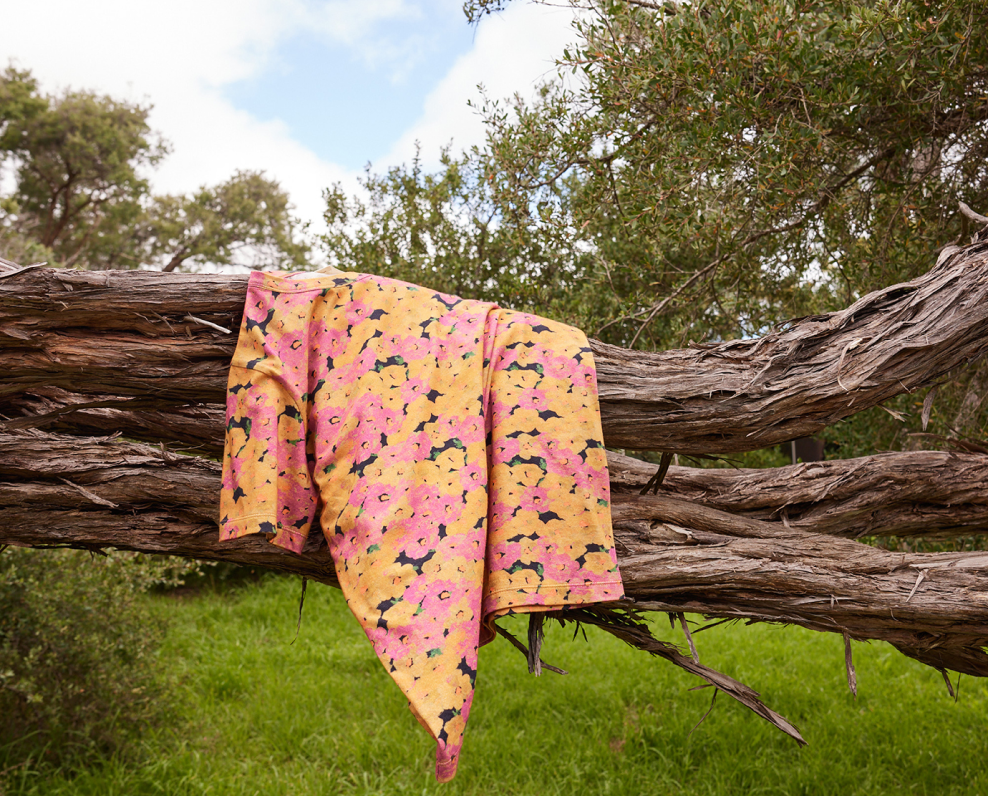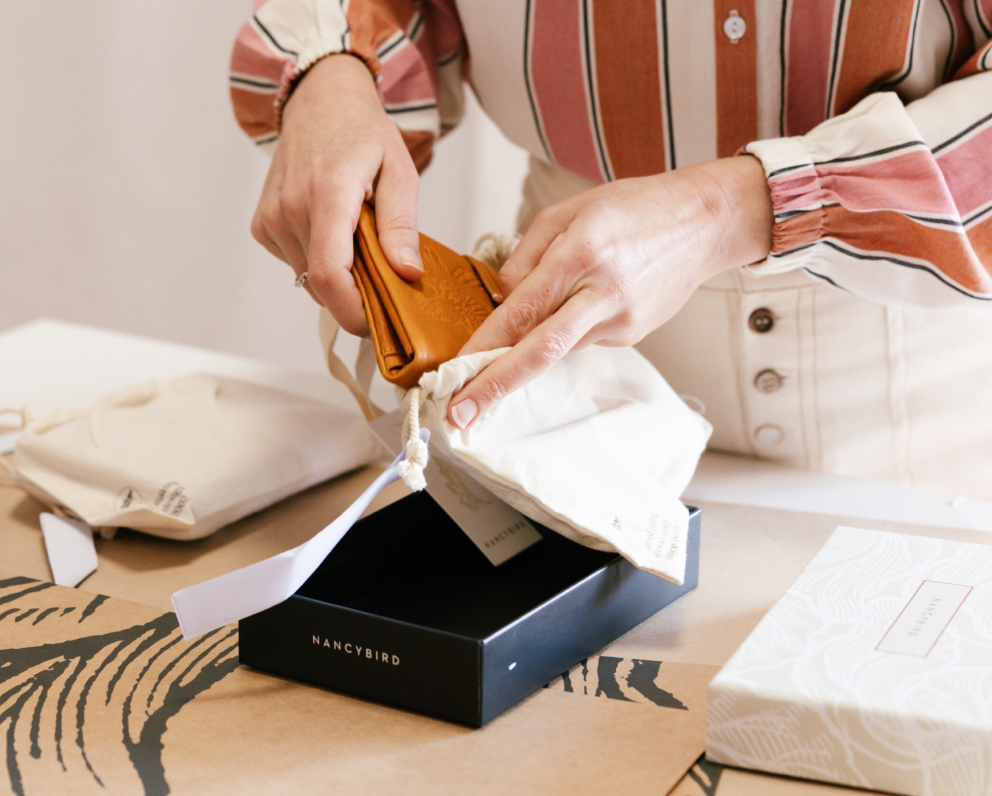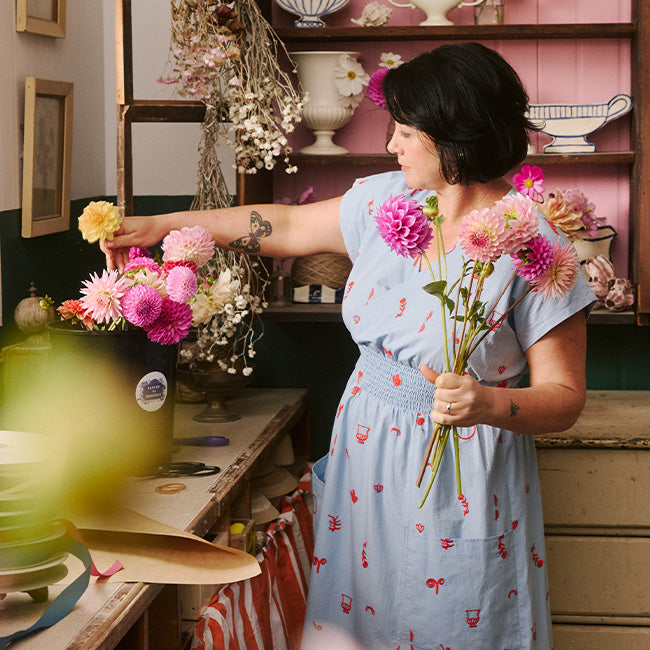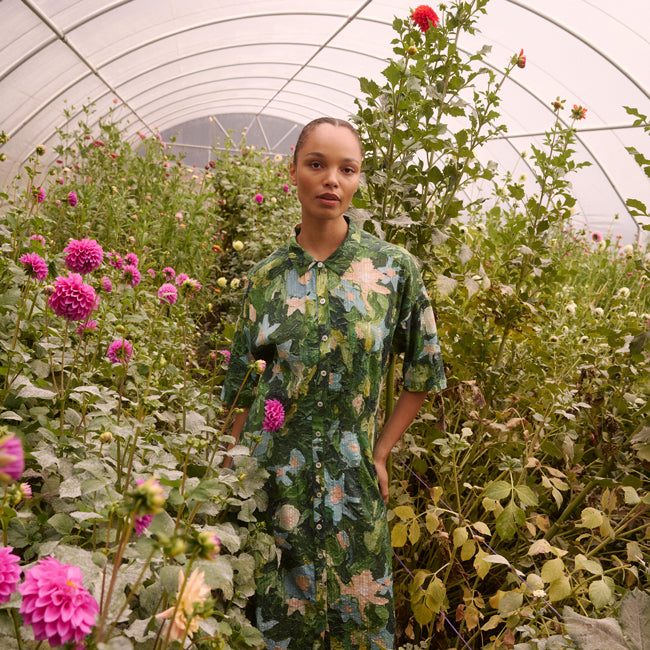Artist spotlight: Cora-Allan Wickliffe

Multidisciplinary Artist Cora-Allan Wickliffe of Niue (Liku/Alofi) Maori (Ngapuhi/Tainui) descent, brings to life the pacific heritage artform Hiapo with or our latest capsule Tiale.
A tradition laid dormant for many years, Cora saw the importance of reviving this unique art form. Creating her own tools and using all plant-based materials by taking the bark from the Ata and Hiapo tree to make the cloth. Read on as Cora shares how she began her artist journey, the process of creating Hiapo and sharing it with community.
What are your earliest memories of creating art?
It wasn’t till recently that I realised I wasn’t exposed to much art growing up. There are five kids in our family, and we all grew up playing a lot of sports. Art came later in life during high school. It was always something I gravitated towards and did well at. I enjoyed watching my grandmother weave and do tivaevae when I was younger, which is also why I am happy to be practising a pacific heritage artform – Hiapo.

Tell us about your workspace.
Last year we moved into an old renovated church space. The building is separated into two spaces, with another family living in the front part where sermons were once held, and we live in the back section that was essentially the hall. This means it is a wide-open space with really high ceilings, so we have someone come in to change the light bulbs. The space is not a conventional home that feels cosy, but it makes an amazing space for two little boys to run around and lay out my work when I need to create large pieces of Hiapo. It also means that we have many large wall spaces to put up our art collection and enjoy my artwork up on the wall, which we are starting to do more of.
My main studio area is set up on the stage, so it has these really old stairs that go up to my room and if the wall was taken down id have a great view of the whole house. The floors are old and wooden with plenty of scrapes showing the years of use, and we even have a plaque outside the front door that says, “the first brick was laid by sister joy”. If I am not working at home, I am working from the Pacifica Arts Centre out West Auckland, filled with older women from the different Pacific islands who all work in heritage art forms. So knowledge holders and lots of gossip surround me.

What is a typical day in the studio like for you?
After hitting the gym, which gets me in a good space, I usually space out my time dependent on the weather. If it’s a good day, I can beat out some cloth. I like to build up my pile to paint in the winter months, giving my body a bit of a break. I also try to spend time focusing on admin and staying on top of those things, it’s important to me to have great communication with those I work with, and I enjoy catching up with curators I have worked with in the past. Remaining close with those who have believed in me and allowed me to exhibit has been essential to my process. I am always very grateful to those who have given me their time.
After the kids are asleep is also when I do a lot of work. I have a beautiful kauri drawing table, and I enjoy spending late nights working on small pieces; and when I wake up in the morning and see what I did the night before, it’s always a surprise. It never seems to be what I thought. Maybe it’s because when I’m tired, I see differently. The great thing about Hiapo is that you can constantly be looking at it, and it changes. Your mood can even change the way you see it.

What first inspired you to explore Hiapo?
My grandparents asked me to begin making Hiapo, but now the most exciting thing is seeing people and other families enjoying Hiapo in their homes and memories. It lay dormant for so long that my grandparents have loose memories with it, compared to my sons who have strong memories and live with a Hiapo maker, which means they know my tools, the sounds, and the patterns of Hiapo well.
What challenges have you encountered teaching yourself a traditional art form that was no longer practised?
The most challenging aspect of making for me was to make sure I was the right person to take up the art form. Traditional art forms are very hard to sustain, and having a lifelong practice was a goal for me, so I know that it has been something that quickly disappeared from theirs lives. But for me, Hiapo will always be in our family line, and my sons will practice and learn how to make it. They don’t have a choice, and that’s what will continue to pass the knowledge on.
I am very grateful to have the opportunity also to look through the archives of Te Papa, our national museum. The staff there have been so generous with their time and are just excited about seeing Hiapo relive as I am.
Something that I encountered that I didn’t think would be a thing was my age. People weren’t used to having a knowledge holder be so young. However, after learning the making process, it is so physical that I can see how it would be good for a maker to be young for harvest times and beat out the cloth. When people hear of a traditional Hiapo maker, they are often thinking of someone older looking. We are in an age where we have moments to bring back and revive some of our artforms with our existing skills. I think a skill I have is discipline, and this is required in bringing an art form back into the community. It requires lots of bending and flexing as the journey is often complex, making many mistakes.

What tools and materials do you use to create your work and what's the process?
From the beginning, I learnt that If I wanted to make Hiapo, I had to make my tools to produce it. My father is a carver, and I have navigated creating tool kits for workshops alongside him. Finding the right hardwood was tricky, but I was able to use timbers from the Pacific and Aotearoa to make my practice sustainable and learn along the way which woods are good for making Hiapo.
I use all plant-based materials, taking the bark from the Ata and Hiapo tree to making the cloth.
I paint with pandanus seeds and use tuitui nut dye to paint my patterns.
Everything comes from the land, and I like a purist approach using materials that our ancestors did. In a way, it connects me to them but also teaches me a lot about why Hiapo looks the way it does.
I see large pieces that may be on a slant and realise the person was probably sitting on their side painting in a particular direction which can make lines seem straight when you’re at a low point of view, but it is slanted when you stand up.
In my journey, I have learnt to just move with knowledge and having a green thumb and learning how to grow things is super helpful.

Can you share your process with us?
For every piece I create, I sit in front of the cloth once it’s ready to paint and just sit with it for as long as it needs and then eventually, the patterns emerge. I have never been scared to paint on the cloth, and I have always felt called to painting, and mistakes don’t exist. Every mark placed on the cloth is meant to be there, and I believe that full-heartedly, so I think that contributes to why I feel like I haven’t made mistakes.
How do you balance the desire to preserve Hiapo while simultaneously exploring modern themes?
My early pieces and practice were focused on repatriating patterns and placing the old Hiapo into the homes of Niueans living around the world. I really enjoy being able to have a pattern possibly kept in a museum in the UK to a piece of Hiapo that now sits in the home of someone living in Niue.
My practice has evolved from this idea of revival. It’s now in the development phase of what I want Hiapo to be in the lives of my family.
I enjoy making my best work and love experimenting with inks, dyes, plants, shapes, patterns, and constantly being inspired by the things around me and not being scared to try new things that come to mind. I like making art, and I just make it because my head is full of ideas, and I need to get them down and made.
I’m also enjoying having a painting/drawing based practice. It means I am getting to know paintbrushes, surfaces, pigments, and the different communities in love with natural colours and what it means to create your own colour palette.
What are you working on now?
I am currently working on animating my patterns. It was meant to open this year during Matariki in Wellington but is now postponed till next year July.Moving into digital technologies and audio is exciting. It is another way to experience Hiapo and live in this world again in a contemporary space.
Connect and follow Cora-Allan Wickliffe:
instagram.com/coraallanwickliffe
cora-allan.co.nz





